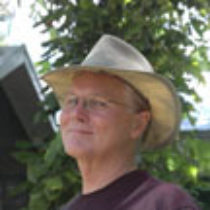Landscape Architecture for Landscape Architects › Forums › SUSTAINABILITY & DESIGN › what exactly is ‘sustainable’?
- This topic has 1 reply, 3 voices, and was last updated 16 years, 11 months ago by
santosh chougule.
-
AuthorPosts
-
January 12, 2009 at 9:46 pm #175631
 Michael SpencerParticipant
Michael SpencerParticipantSay a client comes to me with 200 acres and wants XX DU to make the project work. This is the usual course of events.
Now, I want to know what ‘sustainable’ actually means in this context. Does it mean lower density? does it mean onsite water management? does it mean no pool heaters? does it mean no irrigation?
Seriously. I don’t know how to approach this project from a sustainable POV. Yes, I read all the posts, and I get the whole mantra, but has anyone any experience in a plan of this type?
Realize I am in SW Florida. The land is FLAT. There is a slough next door that runs partly over our property- land that must remain as a preserve unless I figure out how to make it work. But that’s only one problem. I’m looking for a practical example?
January 12, 2009 at 10:31 pm #175634santosh chougule
Participantsustainable means economically, environmentally and socially beneficial project.
In my study program i develop a project that one was dump site but i had suggest idea to develop different kind of garbage system on the same land and develop new environmental friendly park, use storm water ,different kinds of species and also ecologically important.This park also create jobs for neighborhood slum dwellers(like cleaning,security etc)January 13, 2009 at 12:08 am #175633 Michael SpencerParticipant
Michael SpencerParticipantThanks for your response. I think that what I see is the application of sustainable practices to ‘special sites’, like the one you mentioned, and your ideas are terrific.
My question, though, goes more to ‘bread and butter’ planning here in the US. The traditional method is to simply layout the lots for private developer-clients, being, of course, as creative as you can in terms of resident safety, and life enjoyment. But as to the environment- well, here is what happens: the agencies define jurisdictional lines, and everything beyond those lines is considered a clean slate. That’s just what it is, just stating a fact.
I’d like to ratchet this up a notch, that’s all, and wondered if anyone else has a similar project.
Michael
January 15, 2009 at 4:39 am #175632 Thomas J. JohnsonParticipant
Thomas J. JohnsonParticipantI’m confused by your statement “land that must remain a preserve unless I can figure out how to make it work.” It sounds like there is low lying land, that may be a wetland, that you’re legally required to preserve but that you would prefer not to. Why not incorporate this preserve into your plan or even expand on it, utilizing it for on-site water management? Make it an amenity to the community, as a means of reconnecting people with the undisturbed landscape so that they have a greater appreciation for their environment. Celebrate the flora and fauna that the unique feature supports.
As for density, more dense seems more sustainable. Minimize the “blank slate”, amount of land that is compacted to 99%, essentially concrete. Why not create a dense community surrounded by a vast park system and trail network.
Pool heaters seem inherently unsustainable since energy is being consumed to heat a massive volume of water that is unused the majority of the time. But we must balance the needs of the consumer with the needs of the environment. If people want pools they will have pools, so how about introducing geothermal heating to minimize energy consumption. Also, solar water heaters would probably be effective in your area…
No irrigation seems unrealistic since even the most drought tolerant plants need water during the first few years, until they are established. In the residential / commercial areas you’d need permanent irrigation but you could minimize water needs with good plant selection and an efficient irrigation system. For the open space, you could design a temporary system that would be removed after the plants have been established.
For an excellent example of weaving cultural and natural systems you might want to take a look at SWA’s Shady Canyon. http://www.swagroup.com ——–projects——-communities——-shady canyon——
Best regards,
Tom
-
AuthorPosts
- You must be logged in to reply to this topic.


